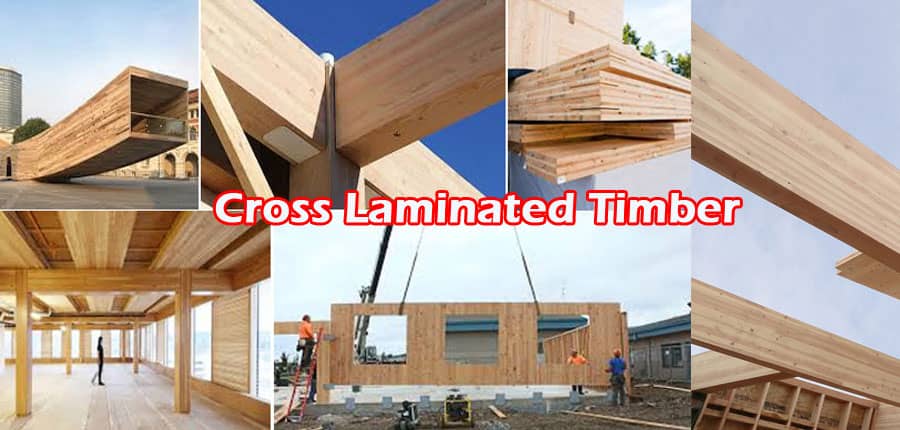Cross Laminated Timber: features and benefits

European countries, particularly Austria and Germany, were the first to use cross-laminated timber in the early 1990s. A collaboration between Austrian researchers led to the creation of modern CLT in the mid-1990s.
In order to manufacture cross-laminated timber, kiln-dried lumber is stacked and glued in perpendicular layers. The strength, appearance, versatility, and sustainability of CLT make it popular in Europe. Due to its lightweight properties and affordability, CLT is increasingly used in the construction industry.
Features of Cross Laminated Timber
Wood planks are sawn, glued, and layered, with each layer oriented perpendicularly to the previous one. CLT panels are manufactured by selecting lumber, removing defects, cutting, applying adhesive, layering, and pressing them together. To achieve the desired thickness, the layering process is repeated. The typical number of layers is three, five, or seven.
CLT does not rot or mold when properly installed and maintained. To prevent direct contact with moisture, CLT elements are protected with sealants, coatings, and flashing.
To improve structural integrity in both directions, each layer of CLT is placed perpendicularly. Therefore, CLT has a higher tensile and compressive strength.
Cross Laminated Timber Fabrication
The fabrication of CLT products is highly precise. Therefore, builders are more confident about the dimensions of their projects. To obtain the desired dimensions, CLT panels are assembled and cut to the specified dimensions by planning all joints, openings, and drill holes.
Panels made of CLT can be used as walls, furniture, ceilings, and roofs. A multi-story, taller wood construction is well suited to this method. To maximize the vertical load capacity, the outer layers of CLT wall panels are oriented up and down. CLT panels for floors and roofs have outer lumber layers that run parallel to the direction of the longer span.
Define Timber Concrete Composite (TCC)
Timber concrete composite (TCC) is formed by topping CLT with concrete compared to other mass timber products. By reducing cross-sections, increasing span, and reducing noise transfer and vibration, TCC is a hybrid system.
Merits of Cross Laminated Timber
- Because CLT construction requires a lighter foundation, it is less expensive.
- There is less labor involved in CLT construction.
- Construction with CLT is quick and dry. This reduces the amount of time it takes.
- Fire naturally chars CLT, forming an outer protective layer.
- As a building material, it is environmentally friendly.
- Construction sites using CLT are dry and clean.
- There is less waste produced by CLT construction.
Demerits of Cross Laminated Timber
- The maximum height of a building constructed with CLT is limited by standard codes and regulations.
- It is not possible to renovate buildings using CLT in the future.
- There are no wall cavities in CLT wall panels, which increases the cost of electrical, plumbing, and other services.
- As there are fewer CLT manufacturing units, material transportation costs are higher.
Applications of Cross Laminated Timber
CLT has been found useful for construction applications since it was developed. It is possible to use CLT panels in both load-bearing and non-load-bearing structures as walls, floors, and roofs.
It was originally used to build low and mid-rise buildings, but in the past few years, it has become a popular choice for high-rise buildings, reaching up to 30 floors. Due to its strength-to-weight ratio, it has proven to be an excellent substitute for concrete and steel.
A number of renowned architecture firms have proposed building skyscrapers from cross-laminated timber in the past couple of years. As of yet, none of these proposals have come to fruition.
